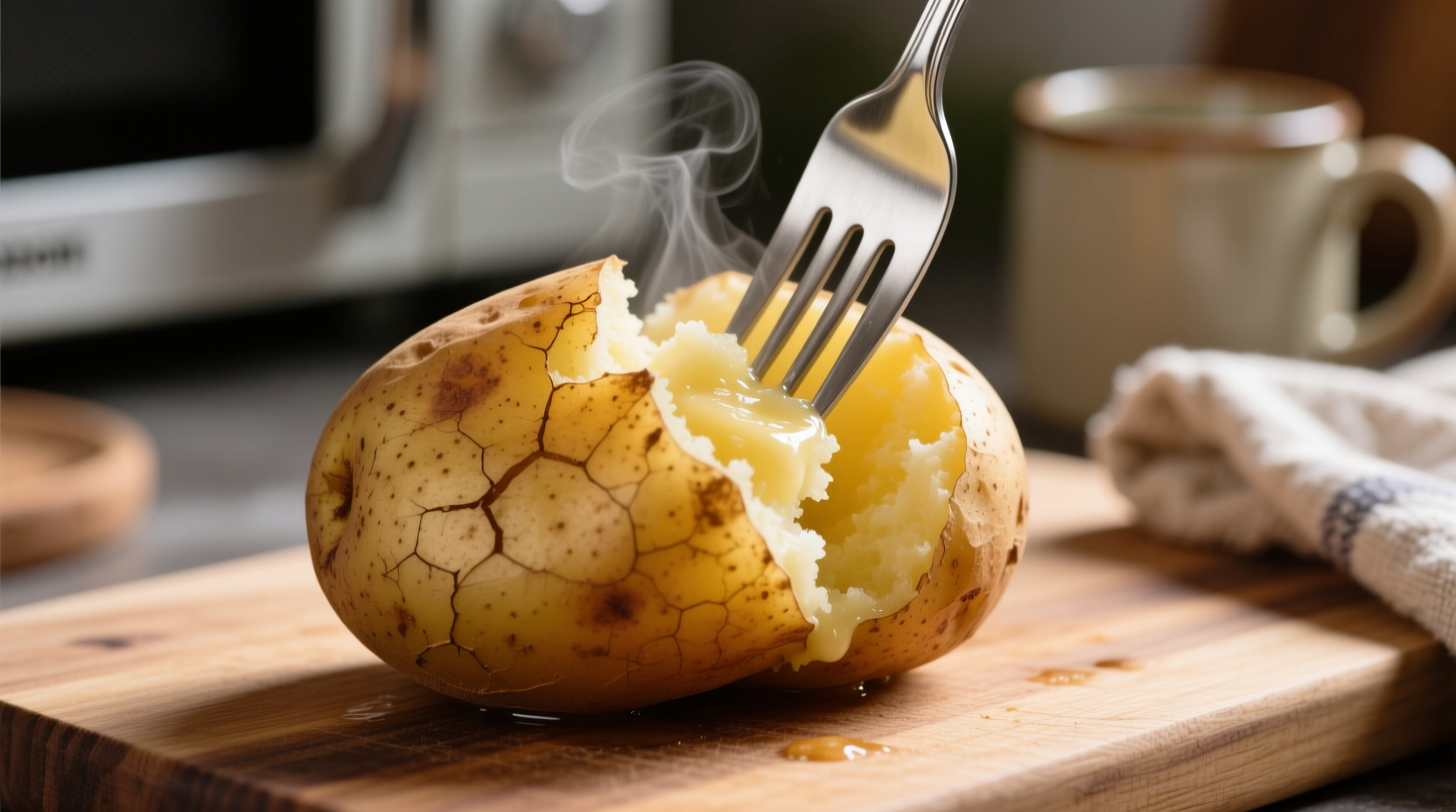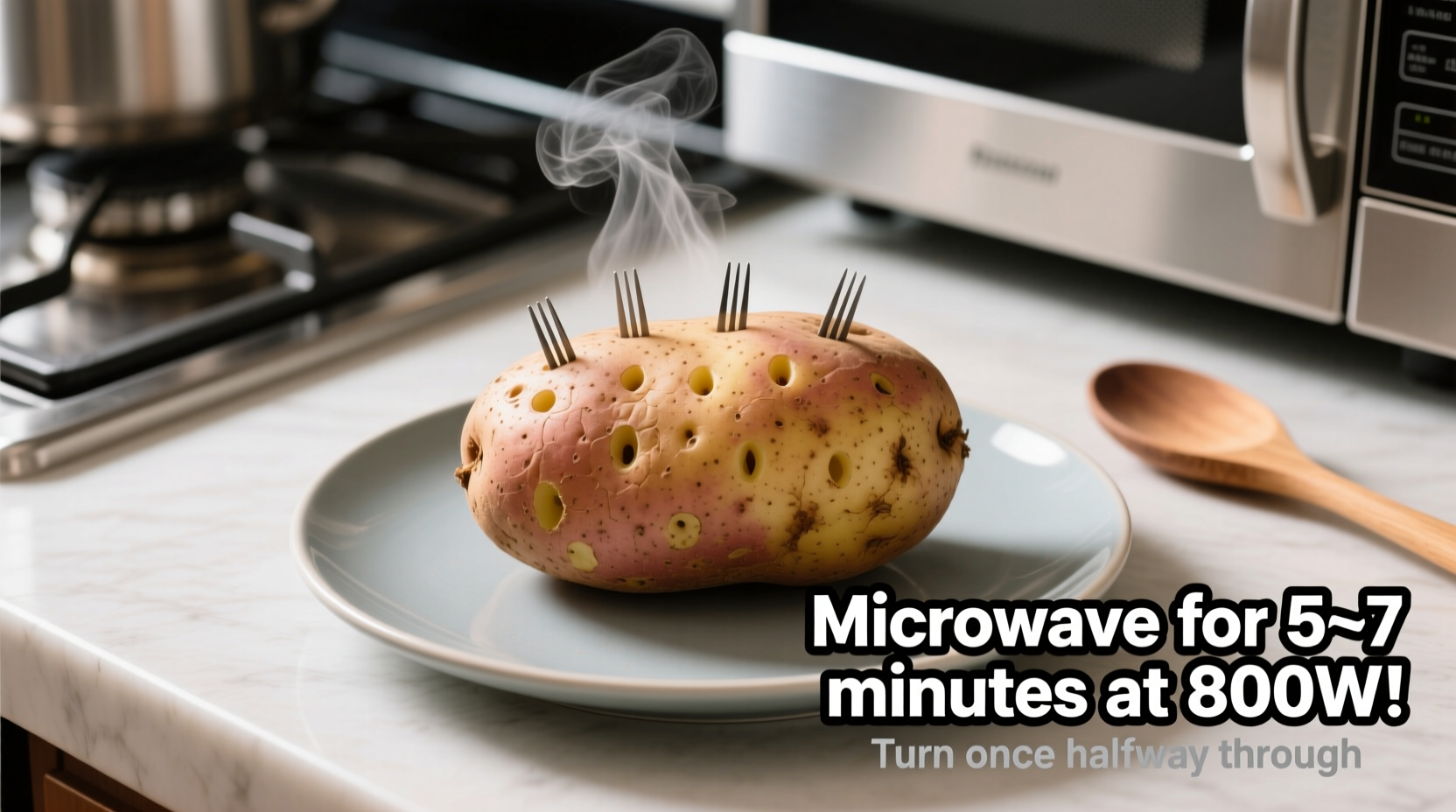Perfectly microwave a potato in 5-12 minutes with this foolproof method: scrub 1-2 medium potatoes, pierce 4-6 times with a fork, microwave on high for 5 minutes per potato (turning halfway), then check for tenderness. For crispier skin, finish under the broiler for 2-3 minutes.
Want a fluffy baked potato without waiting 45-60 minutes? Microwaving delivers restaurant-quality results in a fraction of the time. Whether you're meal prepping, need a quick side dish, or want to save energy, this guide reveals the science-backed technique professional chefs use for perfectly cooked microwave potatoes every time.
Why Microwaving Beats Traditional Baking
Microwaving uses targeted energy to cook potatoes from the inside out, preserving nutrients while cutting cooking time by 75%. Unlike oven baking which primarily heats the exterior, microwaves penetrate the potato's starch structure directly. This method prevents the common pitfalls of either undercooked centers or dried-out exteriors you get with conventional baking.
Step-by-Step Microwave Potato Guide
Preparation Phase: Setting Up for Success
Start with these critical preparation steps that determine your final results:
- Select firm potatoes: Russets work best due to their high starch content, but Yukon Golds make excellent creamy alternatives
- Thoroughly scrub: Use a vegetable brush under cold water to remove dirt (never peel before microwaving)
- Pierce strategically: Make 4-6 deep punctures with a fork to release steam (this prevents dangerous explosions)
- Moisten the surface: Lightly dampen the skin with water to create steam during cooking

Cooking Phase: Precision Timing and Power Settings
Follow these exact timing guidelines based on your microwave's wattage and potato size. The USDA Food Safety and Inspection Service recommends cooking potatoes to an internal temperature of 210°F (99°C) for safe consumption.
| Potato Size | 800-900W Microwave | 1000W+ Microwave | Internal Temp Check |
|---|---|---|---|
| Small (5-6 oz) | 4-5 minutes | 3-4 minutes | 190°F after resting |
| Medium (8-9 oz) | 6-7 minutes | 5-6 minutes | 200°F after resting |
| Large (10-12 oz) | 8-10 minutes | 7-8 minutes | 210°F after resting |
Always turn potatoes halfway through cooking for even heating. For multiple potatoes, arrange them in a circle with space between each. Add 2 minutes per additional potato, but never microwave more than four at once.
Finishing Phase: Achieving Restaurant-Quality Results
Don't skip these final steps that transform a basic microwave potato into something special:
- Let potatoes rest covered for 3-5 minutes after cooking (this allows residual heat to finish cooking the center)
- Test doneness by gently squeezing (should yield slightly) or inserting a skewer (should slide in easily)
- For crispy skin, slice open and broil for 2-3 minutes
- Fluff the interior with a fork before adding toppings
Avoiding Common Microwave Potato Mistakes
Based on food science research from the American Chemical Society, these errors compromise your results:
- Skipping the piercing step: Potatoes contain water that turns to steam - without vents, pressure builds until the potato explodes (this has caused numerous microwave fires according to the National Fire Protection Association)
- Overcooking: Starches break down completely past 212°F, creating a gummy texture instead of fluffy interior
- Microwaving in plastic: Never use plastic wrap directly on potatoes - it can melt into the food. Use a microwave-safe plate cover instead
- Not resting: Cutting immediately releases steam that should continue cooking the center
Customizing Your Microwave Potato
Once you've mastered the basic technique, try these professional variations:
- Steamed potato option: Place potato on a microwave-safe rack over 2 tablespoons of water for moister results
- Flavor infusion: Rub skin with olive oil and herbs before cooking for aromatic results
- Meal prep friendly: Cook multiple potatoes, then refrigerate for up to 5 days (reheat in 60-second intervals)
- Dietary adaptations: For low-sodium diets, skip salt during cooking and use lemon juice or vinegar as finishing acid
Safety First: Microwave Potato Guidelines
The USDA Food Safety and Inspection Service emphasizes these critical safety points:
- Always use microwave-safe cookware (glass or ceramic)
- Never microwave potatoes in their packaging
- Use oven mitts when removing potatoes - they retain heat longer than the dish
- Discard potatoes left at room temperature longer than 2 hours
Remember that microwave wattages vary significantly. If your first attempt isn't perfect, adjust timing in 30-second increments until you find your appliance's sweet spot.
When Not to Microwave Potatoes
Microwaving isn't ideal for all situations. According to culinary research from the Culinary Institute of America, avoid this method when:
- You need crispy skin as the primary texture (use conventional baking instead)
- Cooking more than four potatoes simultaneously (results become uneven)
- Preparing stuffed potatoes that require pre-baking (microwave first, then finish in oven)
- Using very large potatoes over 12 ounces (they cook unevenly)
Conclusion: Your New Go-To Potato Method
Mastering the microwave potato technique saves valuable time without sacrificing quality. By understanding the food science behind starch gelatinization and steam pressure management, you can consistently produce fluffy, perfectly cooked potatoes in minutes. This method works particularly well for busy weeknights, small kitchens, or when you need a quick side dish without heating up your entire kitchen.











 浙公网安备
33010002000092号
浙公网安备
33010002000092号 浙B2-20120091-4
浙B2-20120091-4